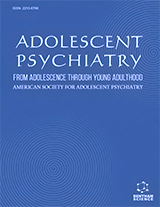Abstract
Background: Substance using juvenile offenders have some of the highest rates for engaging in risky sexual behaviors compared to other adolescent subgroups.
Methods: An overview of the literature on sexual risk behaviors among these youth is provided, including the empirical support for including caregivers/parents as critical partners in sexual risk reduction efforts with this population. In particular, there is (a) evidence that family factors contribute to adolescent sexual risk, (b) emerging support for caregiver focused interventions that target adolescent sexual risk, and (c) established support for caregiver focused interventions that target other complex adolescent behavior problems. In addition, this paper presents preliminary results from a randomized controlled trial evaluating a family-based intervention for substance using juvenile delinquents that combines contingency management (CM) for adolescent substance use with a novel sexual risk reduction (SRR) protocol. Results through six months post-baseline (corresponding with the end of treatment) are presented for intervention fidelity and outcomes including number of intercourse acts (Sex Acts), use of condoms or abstinence (Safe Sex), and obtaining HIV testing (Testing).
Conclusions: In comparison to youth focused group substance abuse treatment, the CM-SRR intervention was associated with significantly greater therapist use of SRR techniques and greater caregiver involvement in treatment sessions (supporting treatment fidelity) and significantly lower increases in Sex Acts (supporting treatment efficacy). There were also higher odds for Safe Sex and for Testing, although these results failed to reach statistical significance. Findings add to the growing literature supporting the feasibility and efficacy of caregiver focused interventions targeting sexual risk behaviors among high-risk adolescent populations.
Keywords: HIV prevention, sexual risk, juvenile offenders, substance use, randomized controlled trial.




























